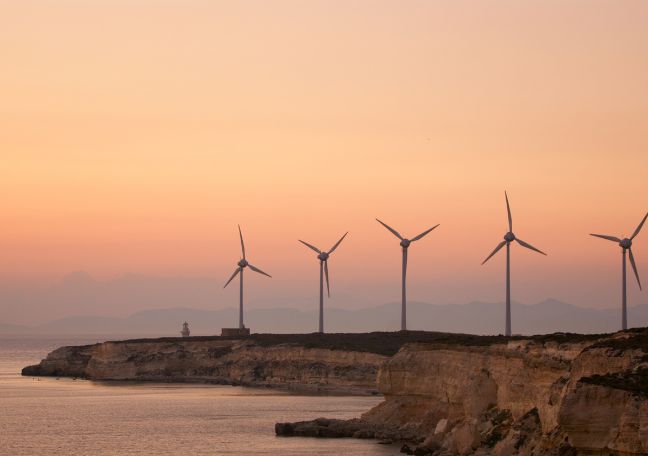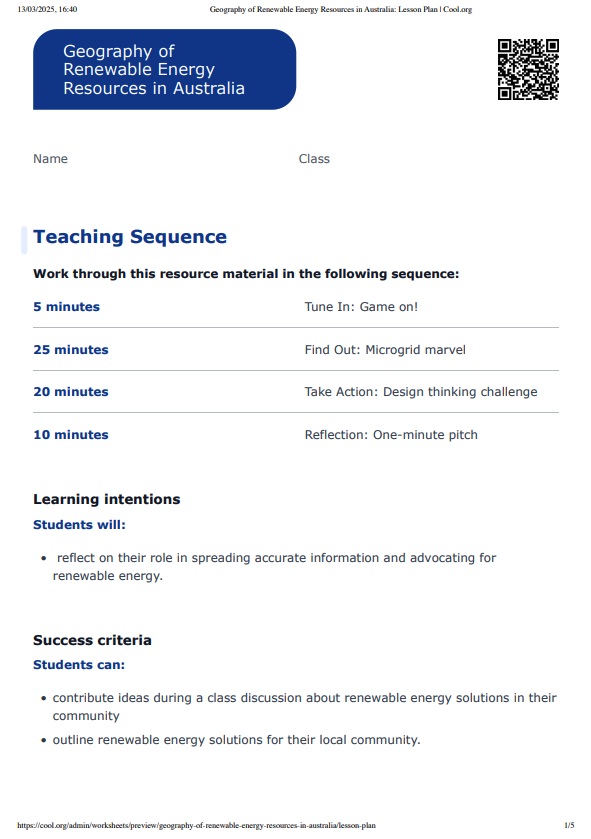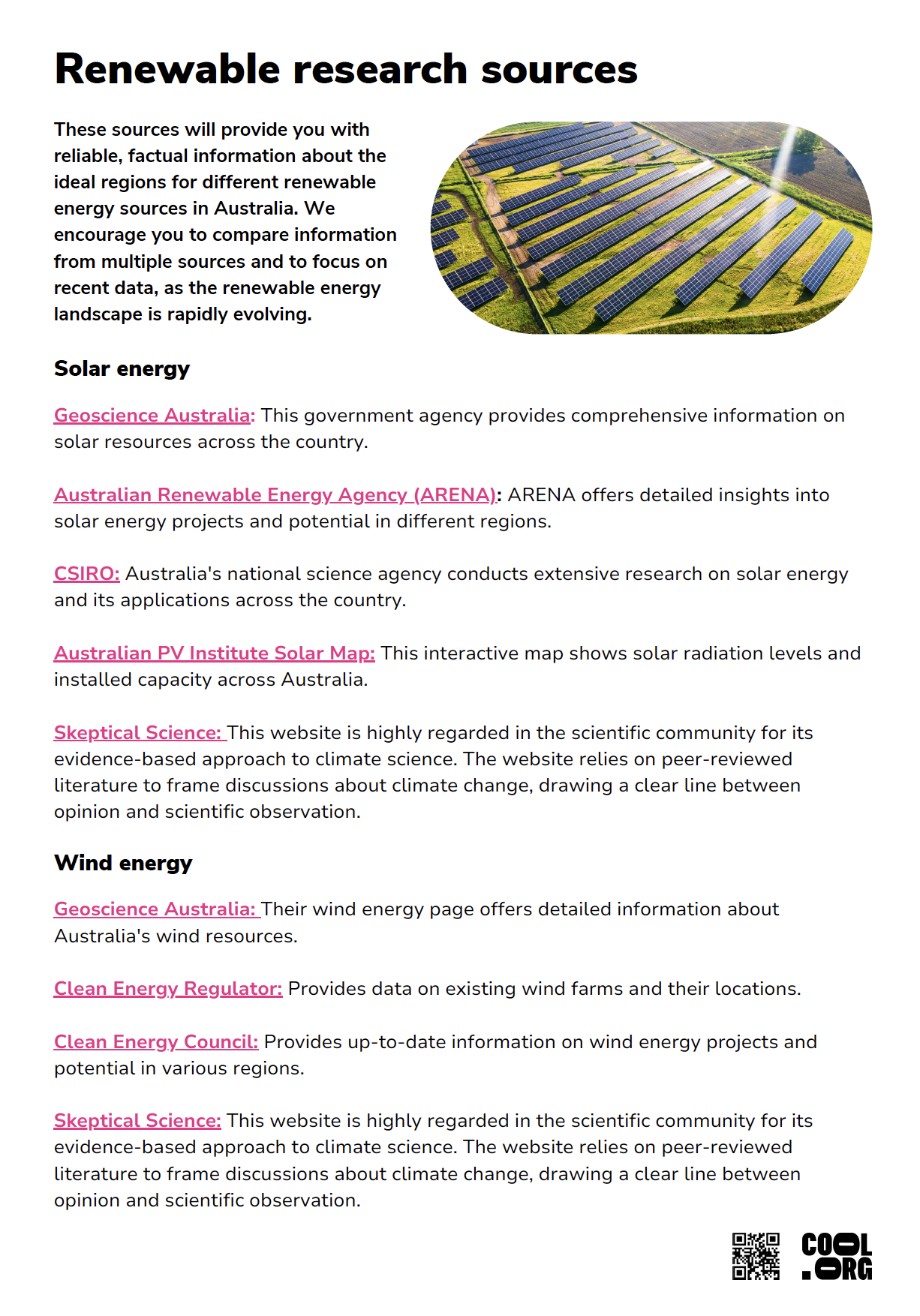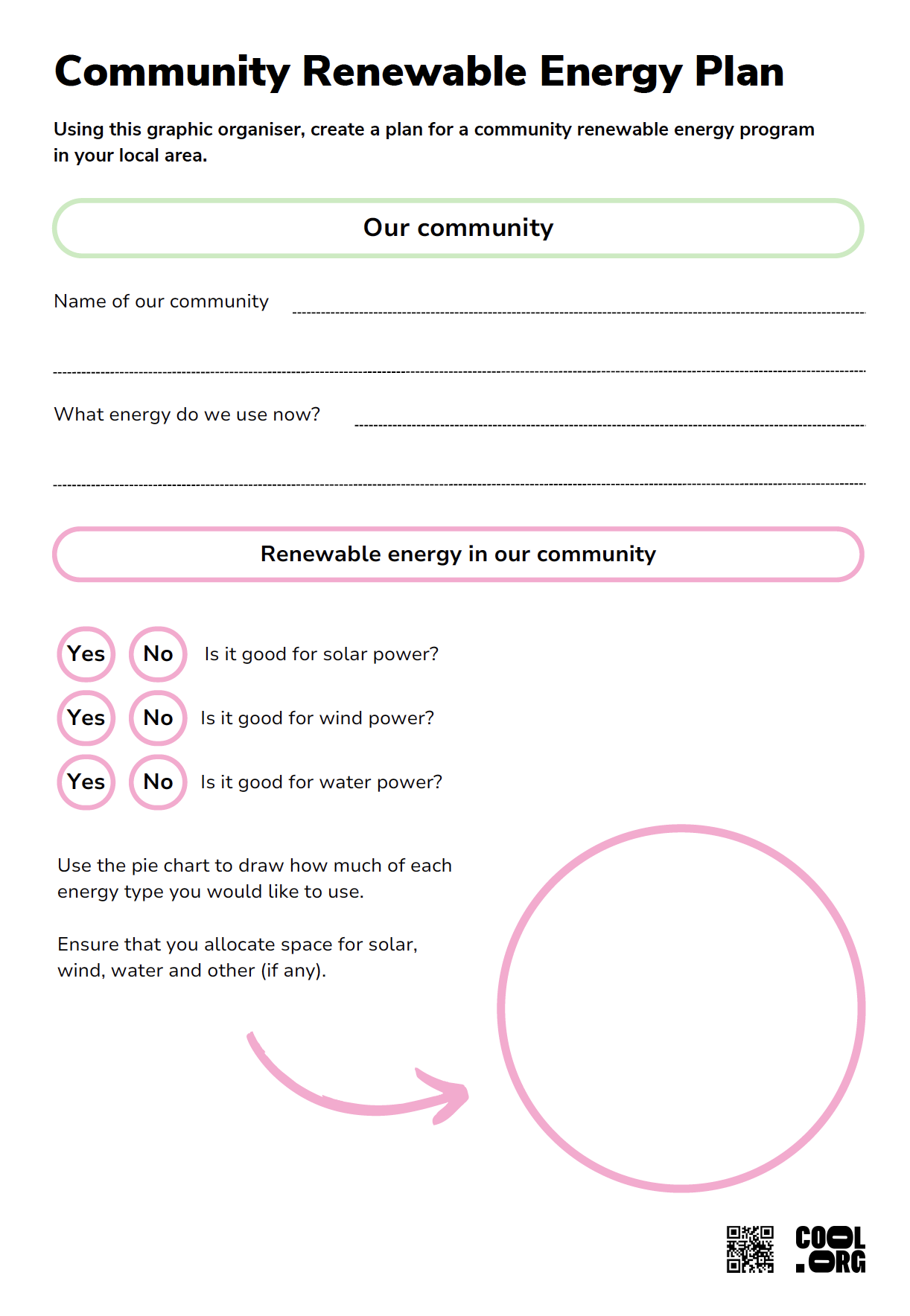Lesson summary
Students will develop an understanding of the importance and impact of reliable information and community participation during community decision-making processes. They will consider their role in spreading misinformation or disinformation about issues and how they can help spread accurate information about renewable energy choices to their local community.
Learning intentions:
Students will...
- reflect on their role in spreading accurate information and advocating for renewable energy.
Success criteria:
Students can...
- contribute ideas during a class discussion about renewable energy solutions in their community
- outline renewable energy solutions for their local community.
Lesson guides and printables
Curriculum links
Select your curriculum from the options below.
Lesson details
Skills
This lesson is designed to build students’ competencies in the following skills:
- critical thinking
- communication
- community engagement
- initiative
- leadership
- global citizenship
- reflection
Curriculum Mapping
Australian Curriculum (v9.0) content description:
Year 5, HASS
Students learn about:
- the management of Australian environments, including managing severe weather events such as bushfires, floods, droughts or cyclones and their consequences (AC9HS5K05).
Year 6, HASS
Students learn about:
- Australia’s interconnections with other countries and how these change people and places (AC9HS6K05).
Relevant parts of Year 5 HASS achievement standards: Students explain the influence of people on the characteristics of places and in the management of spaces.
Relevant parts of Year 6 HASS achievement standards: Students explain the geographical diversity of places and the effects of interconnections with other countries.
NSW Syllabus outcomes:
A student:
- examines global citizenship and how people organise, protect and sustainability use the environment, using geographic information (HS3-GEO-01).
General capabilities: Critical and Creative Thinking, Digital Literacy, Literacy, Personal and Social Capability, Ethical Understanding
Cross-curriculum priority: Sustainability
Level of teacher scaffolding: Medium - the teacher will be required to facilitate discussions throughout this lesson.
UN Sustainable Development Goals
Target 4.7: By 2030, ensure that all learners acquire the knowledge and skills needed to promote sustainable development, including, among others, through education for sustainable development and sustainable lifestyles, human rights, gender equality, promotion of a culture of peace and non-violence, global citizenship and appreciation of cultural diversity and of culture’s contribution to sustainable development.
Resources Required
- Community renewable energy plan activity sheet
- Renewable research sources factsheet
- Online quiz - Renewable and Non-Renewable Resources
- Paper for brainstorming
- Pens
Additional Info
Cool.org thanks our philanthropic funder, Boundless Earth for their generous contributions and collaboration in creating these resources.




Welcome back!
Don't have an account yet?
Log in with:
Create your free Cool.org account.
Many of our resources are free, with an option to upgrade to Cool+ for premium content.
Already have an account?
Sign up with:
By signing up you accept Cool.org's Terms and Conditions(Opens in new tab) and Privacy Policy(Opens in new tab).